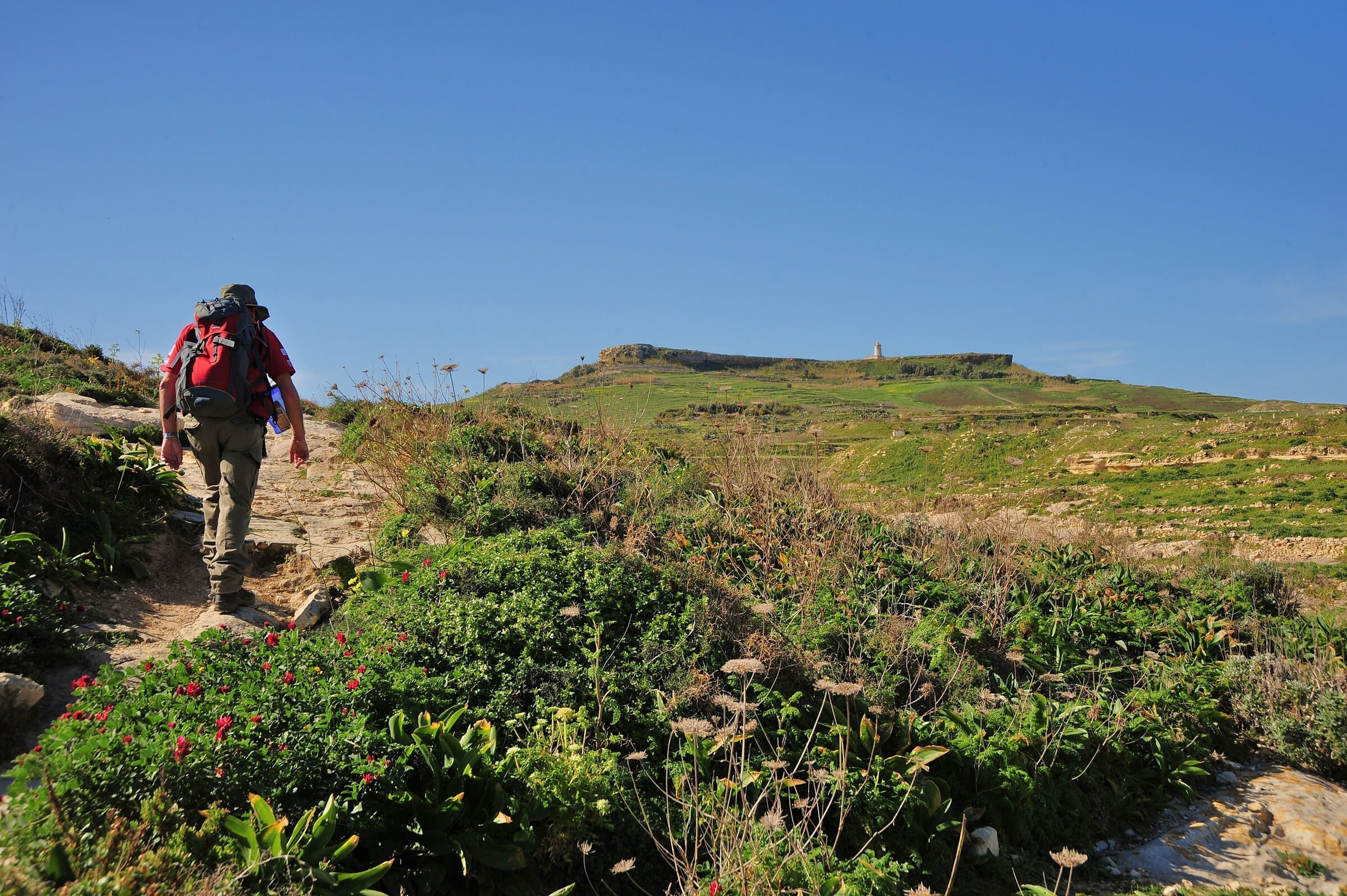The absence of traffic, the spread of fields and valleys, and the enchanting country roads that wind their way between village and hamlet, make for walks that lift the spirit an enrich the senses. Summer evenings allow a pleasant trek, but best of all is that time of year when the pale yellow winter sorrel gives way to the glowing red of spring-time clover. Even those who are not hardened walkers may stroll through the streets and gaze about them, noting details that delight.
The quaintness of the alleys and centuries old houses exert a magnetic attraction on those who wield brushes or use cameras. The urge to capture these charming sights is impossible to resist, and those who lack the talent carry lasting impressions in their soul. Brilliant postcards on racks spill over pavements in the main town and villages, making it possible to take the sights back home. The finely-carved old stone balconies, disused and renovated farmhouses stand in sharp contrast to the houses of emigrants who have returned from the New World, with their stone kangaroos, maple leaves, stars and stripes, and “God Bless America” mottos, which have a charm of their own.
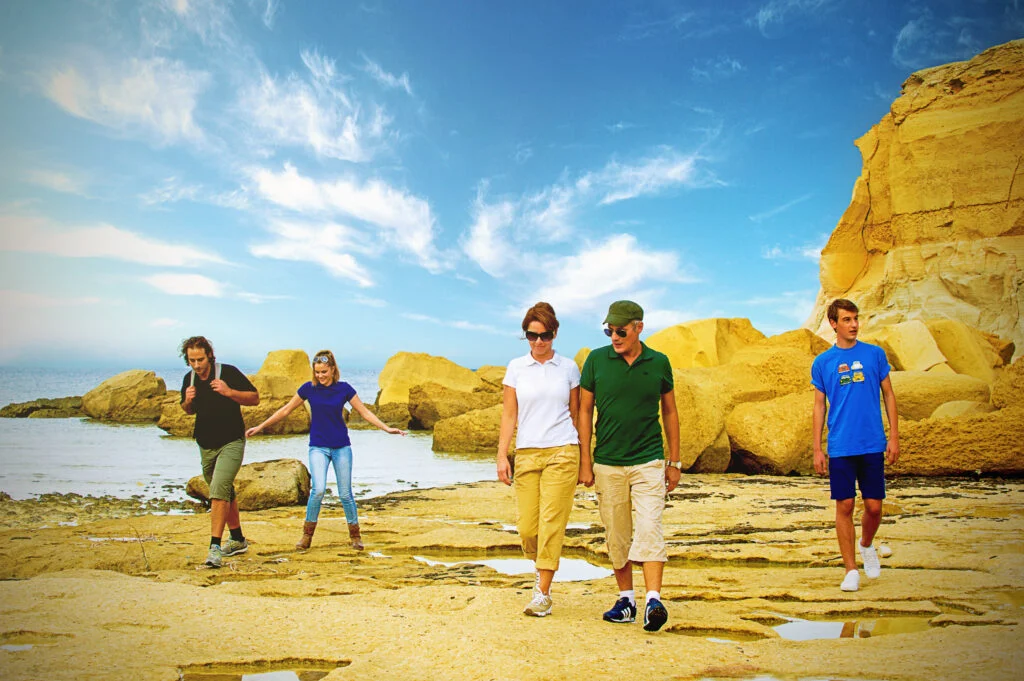
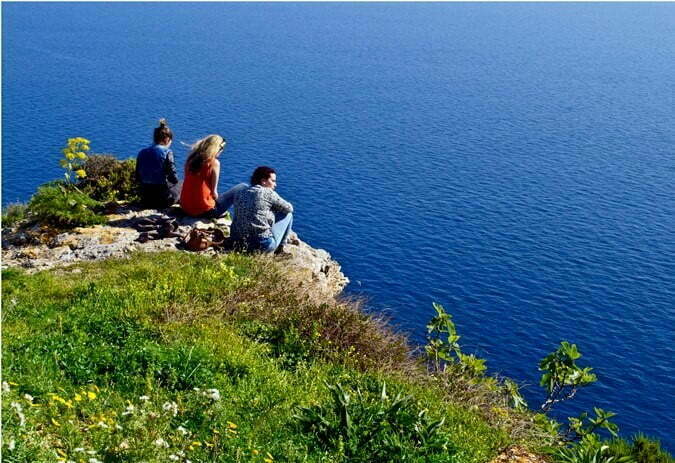
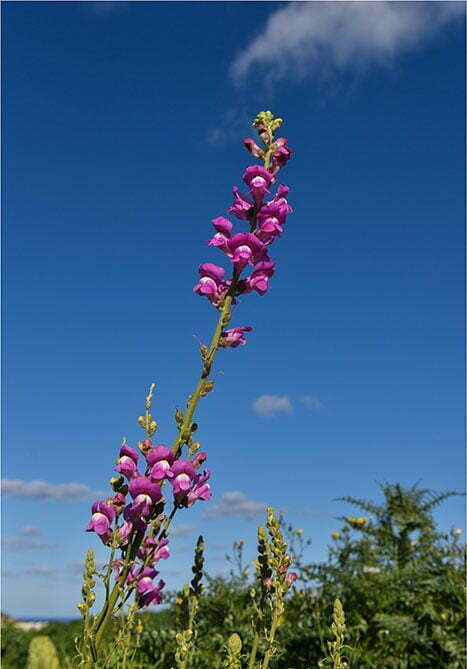
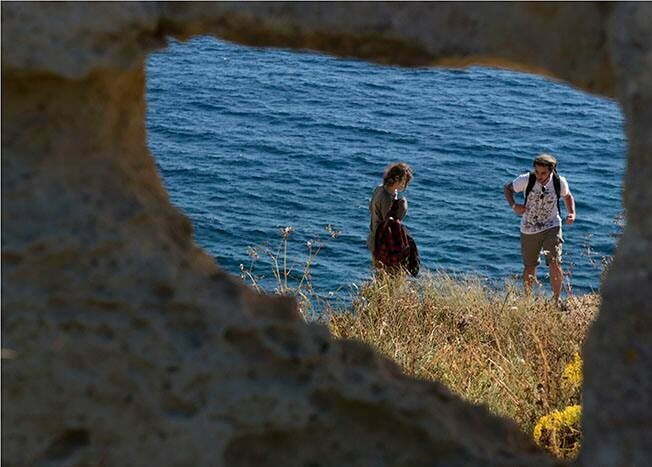
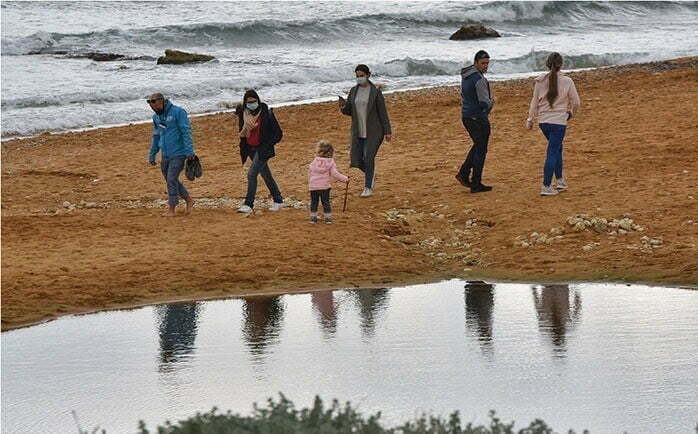
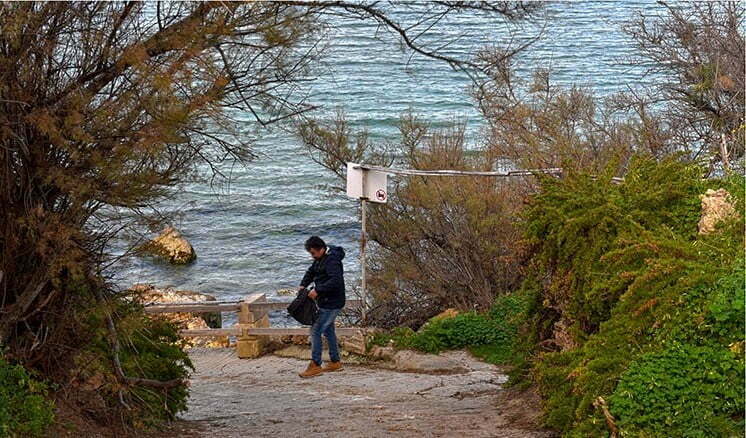
The great advantage of walking in Gozo is the enormous variety of scenery and character in such a small area: wind-swept cliffs, towers which have been guarding the island for more than 300 years, pebble gorges with rushing waves, clover-strewn fields, and chapels nestling in lonely valleys, with fresh-water springs trickling through. One such is the remarkable chapel of the Annunciation, in the valley of the same name, built in 1347 and rebuilt in the 17th century. Also spectacular is Wardija, where the remains of a Roman sanctuary stand in dramatic solitude on one of the island’s highest points.
The isolated chapel of San Dimitri is a place to stand and dream, and to remember the legend of a widow who lost her son to pirates, and who prayed in desperation to a painting of San Dimitri. The saint promptly rode out of the picture on his horse, and took off across the sea, to return with the young man. The woman’s gratitude was eternal, and she lit a lamp beneath the painting for the rest of her days.
Those with tougher leg muscles and greater energy can hire a bicycle and tackle the hills, cycling past carobs, capers, and prickly pears. But this is not for the faint-hearted, though the lack of traffic on the roads makes for safety.
There is a wide variety of very rewarding walks within valleys, around hills, or along the coastline where there is always something new to discover. The whole island can be reached on foot from Rabat, but for a less arduous walk, it is advisable to take a bus from Rabat to the village closest to the route of the chosen walk. The following are a few suggestions but one can literally wander at whim and discover one’s own itinerary.
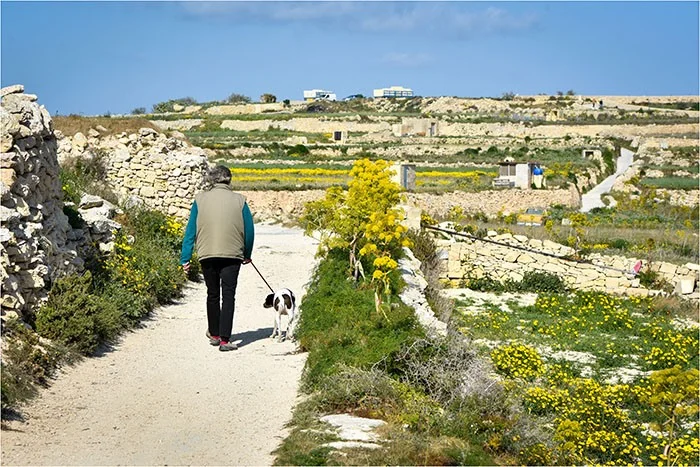

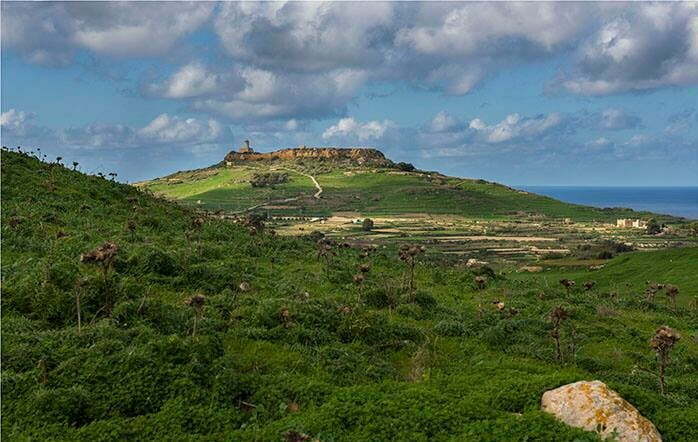
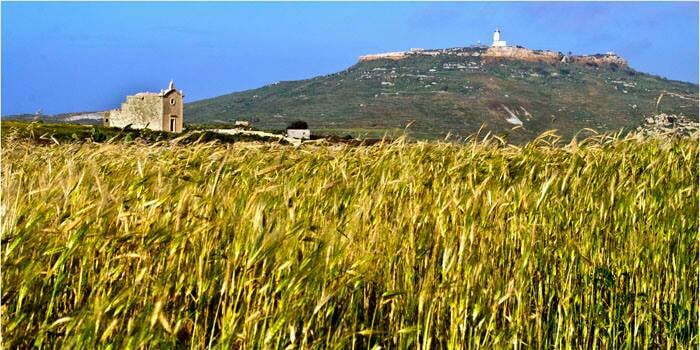
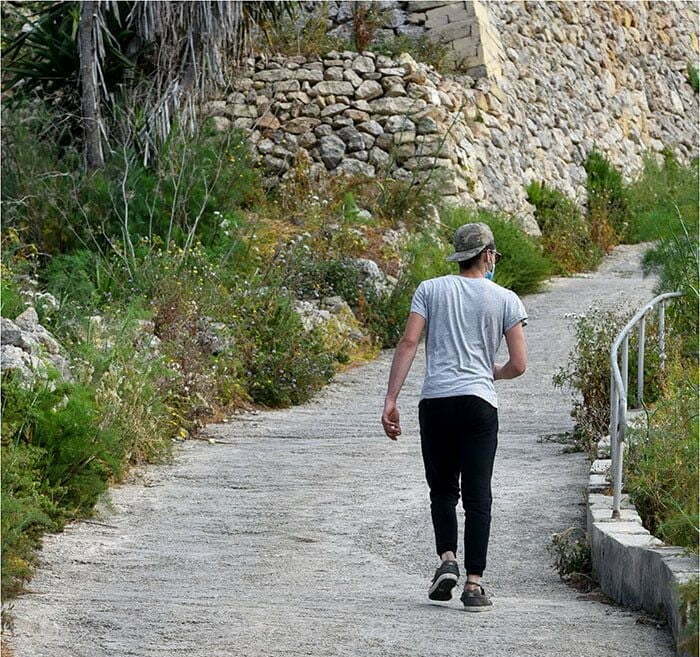
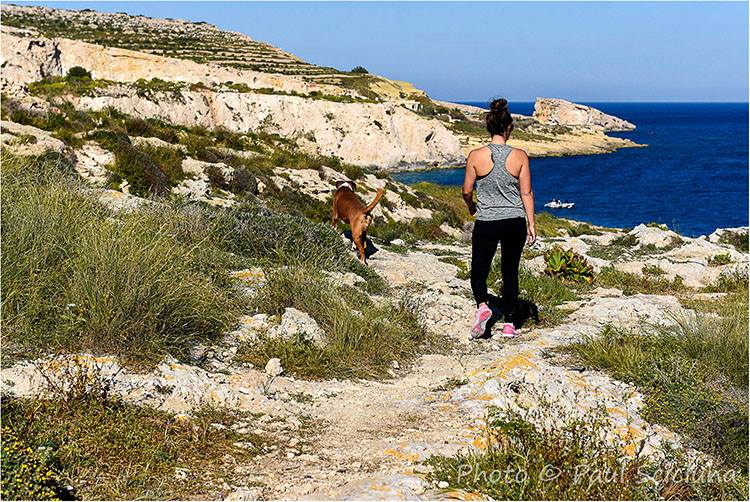
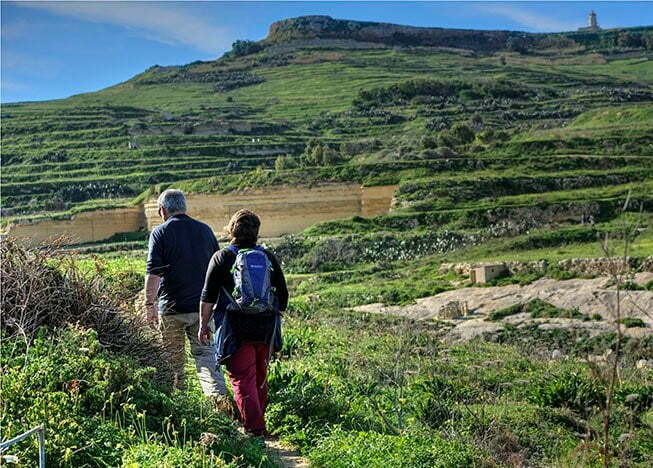

Kercem, Ras il-Wardija, Dwejra
One of the most exhilarating walks all year round is along the coastline of Gozo from rugged ta’ Klula beyond the village of Kercem to l-Ghadira ta’ Sarraflu, the pool of the archangel Raphael, allows circular depression that fills up with water for most of the year, to Ras il-Wardija, where there are the remains of a Punic sanctuary and then along the coastline to breathtaking Bay.
San Lawrenz, Ta’Dbiegi, Wied Ilma
A very fine walk through peaceful and unusual scenery is from the village of San Lawrenz, through the street parallel to the Gozo crafts Village and up to Ta’Dbiegi hill, the highest point in Gozo. A series of views open up from the top for almost the whole of Gozo is visible. Back to the foot of the hill a short walk to the west leads to the deep-cut valley Wied Ilma and ends at il-Qawra the well-known Inland Sea.
Lunzjata Valley, Xlendi Valley, Xlendi
Lunzjata valley is Gozo’s green heart and it is a haven for walks in winter. It can be reached from the road that from the town of Rabat wends its way to Kercem. If it has not rained for some days, it is possible to walk wither along the valley or through a path running parallel to it up the Rabat – Xlendi road, then along the bed of deep Xlendi valley, a riot of wild flowers for most of the year.
Tas Sannat, Ta’ Cenc, Mgarr ix-Xini
An invigorating and most interesting walk is from the village of Ta’ Sannat and along Ta’ Cenc plateau, one of the island’s most spectacular places with cliffs falling some 140 metres vertically to the sea. Most of the walk is along rough and rugged rock and at the southern extremity there is the tiny port of Mgarr ix-Xini. The entrance to the bay is guarded by a tower, raised by the Universitas or the local Government in1661.
Mgarr, iz-Zewwieqa, Hondoq ir-Rummien
From behind the left arm seaward of the Mgarr breakwater, a path extends onto iz-Zewwieqa. From here it is possible to walk along a fairly well defined track through fields, climbing a little over the cliffs, up to the bay of Hondoq ir-Rummien beneath the village of Qala. There are splendid views of the island of comino all along.
San Blas, Wied ir-Rihan, Dahlet Qorrot
From the village of Nadur, it is easy to find the way to San Blas valley and bay, on the east coast of Gozo. San Blas valley is one big orchard with several bountiful springs and the bay at its mouth is unique. A path on the right seaward leads to the rugged grandeur Il-Gebel tal-Mistra, literally “the Rocks of the Hidden” or “Mysterious Place”. From this spot, it is advisable to retrace one’s steps up to the valley and proceed towards the left on il-Qortin to Wied ir-Rihan and the tiny bay of Dahlet Qorrot.
Marsalforn, Qbajjar, Xwejni, Wied il-Ghasri
The attraction of this route is the fact that practically all the walk is in close proximity of the open sea and hilly scenery on the other side and passing through the smallest hamlet of Ghasri with two hundred inhabitants.
Marsalforn, Ghajn Barrani, Ramla l-Hamra
This is an ideal walk for the more adventurous, who enjoy undulating levels, manoeuvring some slippery clay ground leading down to Ramla l-Hamra from breathtaking heights of Ghajn Barrani.
